Wildflowers, Grasses and Other Nonwoody Plants
Media

Species Types
Scientific Name
Typha spp.
Description
Missouri’s cattails are all tall wetland plants with narrow, upright leaves emerging from a thick base, and a central stalk bearing a brown, sausage-shaped flower spike.
Media
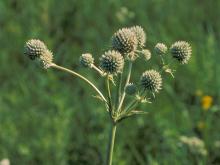
Species Types
Scientific Name
Eryngium yuccifolium
Description
“It’s an odd plant,” this rattlesnake master, “with its leaves like yucca, a head like a thistle, and second cousin to the carrot.” That’s how the great prairie writer John Madson summed it up!
Media

Species Types
Scientific Name
All true grasses (species in the grass family)
Description
Missouri has 276 species in the grass family, including well-known crop plants and our native prairie grasses. Distinguishing between the species can be difficult, but it’s easy to learn some basics about the group.
Media
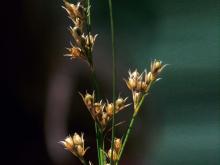
Species Types
Scientific Name
Juncus spp. and Luzula spp.
Description
Missouri has 24 species in the rush family. Distinguishing between these grasslike plants can be tricky, but it’s easy to learn some basics about the group.
Media

Species Types
Scientific Name
Carex, Schoenoplectus, Scirpus, and other genera
Description
Missouri has more than 200 species in the sedge family. Distinguishing between these grasslike plants can be difficult, but it’s easy to learn some basics about the group.
Media
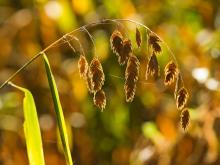
Species Types
Scientific Name
Chasmanthium latifolium
Description
River oats is a native cool-season grass that is common nearly statewide in bottomlands, stream valleys, and other moist places. The open, nodding, flattened flower and seed clusters are distinctive.
Media
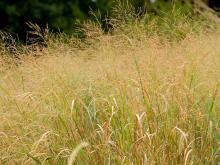
Species Types
Scientific Name
Panicum virgatum
Description
Switchgrass is a native perennial, warm-season, clump-forming mid or tall grass. In midsummer, delicate-looking, open, multiply-branching flowering clusters rise above the foliage.
Media
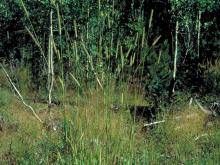
Species Types
Scientific Name
Phleum pratense
Description
A native of Europe, Timothy is a common cool-season pasture grass and occurs in a wide variety of open or disturbed habitats. It is one of the worst causes of hay fever in the late spring and early summer.
Media

Species Types
Scientific Name
Elymus virginicus
Description
Virginia wild rye can be identified by its bristly seed heads, which are held erect and whose bristle-like awns stay straight. This is a common native perennial tuft-forming, cool-season midgrass usually reaching about 2–4 feet in height.
Media
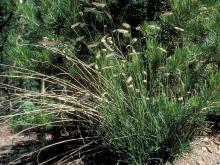
Species Types
Scientific Name
Bouteloua gracilis
Description
Blue grama is a native perennial warm-season short grass that forms dense clumps. The flowering stems are 6–12 inches tall, and the short, curving, one-sided seed head resembles an eyebrow. In Missouri, it occurs mostly in our northwestern loess hill prairies.
See Also
About Wildflowers, Grasses and Other Nonwoody Plants in Missouri
A very simple way of thinking about the green world is to divide the vascular plants into two groups: woody and nonwoody (or herbaceous). But this is an artificial division; many plant families include some species that are woody and some that are not. The diversity of nonwoody vascular plants is staggering! Think of all the ferns, grasses, sedges, lilies, peas, sunflowers, nightshades, milkweeds, mustards, mints, and mallows — weeds and wildflowers — and many more!





















